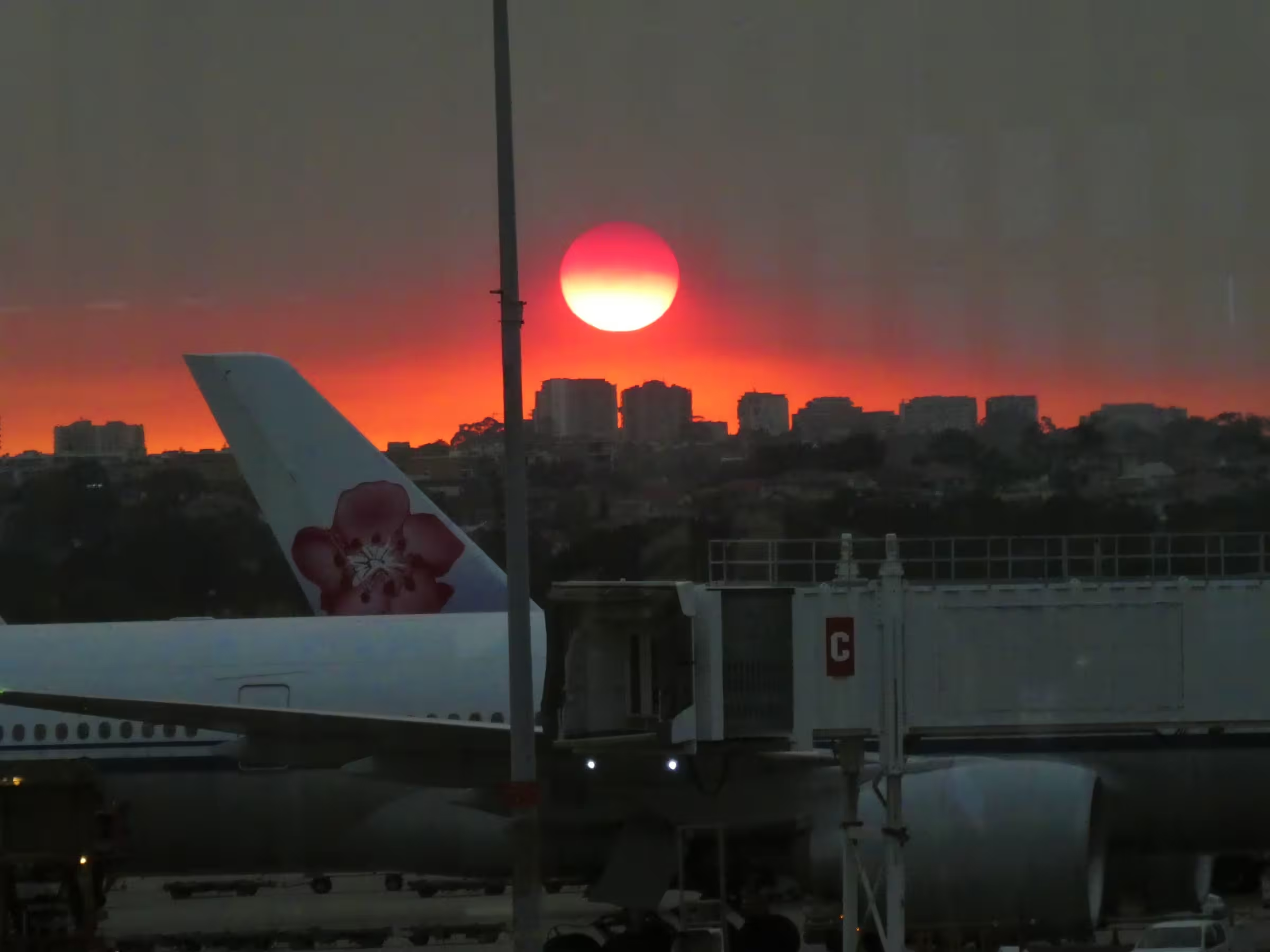If you follow climate news at all, you’ve probably been made to feel guilty about that one flight you took last year for your first real vacation in who knows how many years. But is your guilt really justified?
It’s interesting to us that the topic of climate change somehow almost always circles around to passing the blame on to our world’s lower and middle-class citizens. Pundits get on TV and cite things like “overpopulation” as the root of all our problems and corporate media outlets release headlines like Is Your Vacation Ruining the Planet?, all essentially making us feel guilty for even existing or trying to get more out of life than our tedious 9-to-5s. But are we really causing that much damage? If so, what can we do? Should we start donating to climate activist organizations or paying the optional carbon offset fees when we fly? Should we just stop flying all together?
Generally speaking, neither of those first two solutions are bad by any means. If you have the extra income to donate to a good cause, then you certainly should. Likewise, one could make the argument that if you can’t afford the additional $2 carbon offset fee, then you can’t actually afford the trip you’re taking. But again, this is working under the assumption that us little guys are entirely to blame for the global air traffic emissions. It still seems a little unrealistic to us, so we checked it out.
Even as world travelers, we personally only fly about 2 times per year on average. If we consider that only 5-10% of the world population flies at least once per year and assume they are all like us (spoiler: they’re not), then we can easily multiply 780 million (10% of world pop.) by 2 flights per year to come up with a conservative estimate of 1.56 billion air passengers per year. That may seem like a lot, but the real number is even more staggering. There were 4.54 billion air passengers in 2019, not including private jets. That means that each person who flew last year would actually have to have flown 5.82 times; let’s round that up to 6 for simplicity’s sake.
Who is flying 6 times per year? If we only fly 2 times per year, then which other couple is flying 10 times per year? If you only fly once per year, then who’s flying 11 times? Who’s making up the difference? Thankfully, researchers have answered that question. In brief, private jets, owned by billionaires like Bill Gates (who flies around 60x per year) release 40x more CO2 into the atmosphere per passenger than the average economy class flight. To put that into perspective, in the UK, alone, this is equivalent to the CO2 emissions of 450,000 cars. Now you’re probably thinking, “Those numbers are appalling, but those are private jets. Who’s actually flying so often with commercial airlines?”
That’s a great question. It turns out, pretty much the same people. In 2017, 12% of Americans were responsible for 68% of all domestic and international flights originating or landing in the U.S. These are passengers who fly 6 or more times per year. These same passengers are often premium class (business or first class) passengers who are less concerned about the price of a flight and whose carbon outputs are 3 to 9 times higher than those who fly in economy class. Okay, so they’re not necessarily oligarchs, but these passengers are generally either very wealthy (e.g. celebrities, big business owners, politicians) or their flights are being paid for by someone who is, e.g. corporate flights.

So is tourism to blame for aircraft carbon emissions? Eh, kinda, not really. I mean, sure, we vacationers aren’t faultless, but we’re certainly not making the biggest contributions. If we occasional flyers just did what we’re told and stopped visiting our families or splurging on that one vacation we saved up for, then we would eliminate less than 1/3 of the total commercial airline emissions. That is actually a lot, but it would (as always) require great sacrifices from the lower and middle classes and (as always) none from the upper classes and elite. Can we take steps to reduce our carbon footprint? Yes. Should we? Absolutely. If lower and middle class citizens stop flying, will that solve the problem? As you can see, no.
What’s the Solution?
We are not the types to complain without offering a solution, so it’s only right to mention some of the proposals that are currently out there for tackling this problem.
- Eliminate short-haul flights (30 min. to 3 hour flight duration): This is certainly a proposal we can get behind, but we live in Western Europe, where the train and bus infrastructures are well established. Other parts of the world (even “the greatest country in the world”) don’t currently have the infrastructure to support alternative mass transit systems. We would say that eliminating flights under 2 hours might be a good start until better alternatives are in place (but the alternatives must be implemented!).
- More efficient aviation technology: Look, we love technology and of course airlines should implement more efficient fuels, designs, flight paths and processes, but technology isn’t the cure all and we can’t rely entirely on innovation to dig us out of this hole. This is another good start, but not a complete solution.
- Carbon offset fees: These currently exist as voluntary fees, but some are proposing they become mandatory. People would certainly complain about that, but airlines could just add it into the cost of the ticket or reduce their own profits by a couple bucks per ticket and pay toward the carbon offset themselves. Certainly, there’s a tax break in there for them somewhere. Even so, carbon offsetting doesn’t really work that well. However, if you are interested in this approach, then we highly recommend this carbon offsetting program.
- Increasing ticket prices for each consecutive flight in a single year: We think this is generally a clever idea, but we do see a problem with it. As the research above shows, the people with flying fever don’t care what a plane ticket costs and the owners of private jets and private jet timeshares (really, that exists) aren’t paying for tickets, so the biggest carbon contributors wouldn’t really be affected.
- Limit the number of flights per person (commercial and private): Some of you will probably get stuck on this one. Look, we love our freedoms just as much as any other red-blooded American, but it’s important to remember that your freedoms end where another person’s begin. By over consuming (on flights in this case), you are partially responsible for taking away someone else’s right to live in a healthy environment. This solution is more than reasonable.
- Ban private flights: We’re all for this. Private jets are completely unnecessary. Of course, the super wealthy love their exclusiveness and may argue that they need their privacy, but don’t we all need privacy? Aside from that, if the ultimatum is either to grant the super rich special privileges or save the planet and our species from a global catastrophe that could ultimately kill billions of innocent people, then the answer is pretty simple.
- Alternative modes of transportation: As we mentioned before, there isn’t currently enough infrastructure to solve the problem overnight by switching to train or bus travel, but this one is still pretty good. Cars and buses pollute as well, but a single round trip with a car or bus is still nothing compared to a round-trip flight; especially if you’re traveling a shorter distance. Electric trains are commonplace in Europe and they could be implemented in other parts of the world as well, but there’s an even better alternative: the Hyperloop train. This “dream” will soon be a reality. The Hyperloop can currently transport passengers at 10x the speed of standard passenger trains. It also costs less, is cleaner, safer and way more efficient. A single trip from LA to San Francisco, for example, could cost as little as $20 per person. We love it. The obstacles these companies will face isn’t innovation, but private interest. They’ll need to acquire land and implementing this technology will completely disrupt a number of major industries.
Combining the Best of All Solutions
Every solution has it’s pros and cons and no single idea is perfect, but it’s clear to us that the best way forward is to combine the individual solutions in an organized effort to reduce air traffic pollution as much as possible. In addition to implementing more efficient aviation technology and eliminating short-haul flights (with no exceptions), we should simultaneously be investing in realistic offsets, limiting the number of flights (commercial and private) that individuals are allowed to take in a given year and begin building the proper infrastructure to phase out a portion of flights that should be unnecessary, given our technological capabilities.
We’d love to hear your thoughts. Add a comment below!
Want to know roughly how much you’re contributing to climate change? Use the WWF Carbon Footprint Calculator to find out. At the time of this writing, we ourselves are 6% over the goal. We’re proud that our footprint is so small despite traveling, but we also recognize that we still have plenty of work to do.




